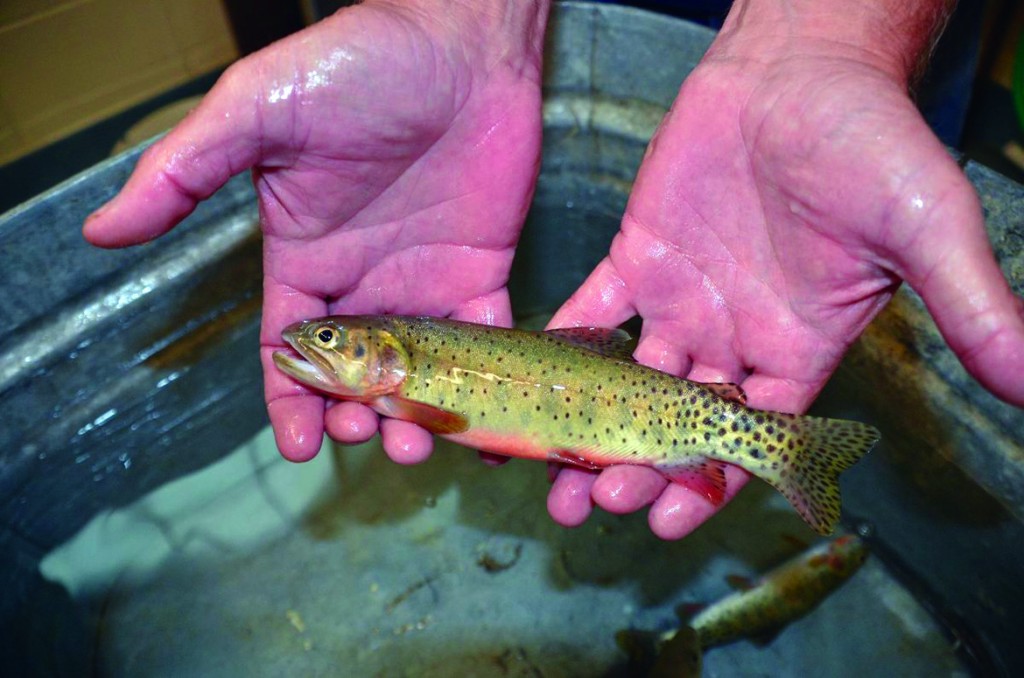Meeting to discuss new San Juan cutthroat trout management

PAGOSA SPRINGS— Management plans for a new pure genetic strain of cutthroat trout will be discussed at a meeting, 6:30 p.m., April 16 at the Springs Resort, 165 Hot Springs Blvd. in Pagosa Springs.
The meeting will be led by representatives from Colorado Parks and Wildlife, Trout Unlimited-Five Rivers chapter and the U.S Forest Service.
The unique San Juan River cutthroat trout was found by Colorado Parks and Wildlife biologists several years ago; however, the find was only verified last year thanks to advanced genetic testing techniques. Specimens of the fish were found in eight remote and isolated streams in Southwest Colorado on public and private land. Last summer, some trout were spawned on site and the fertilized eggs were taken to CPW’s Durango hatchery to be raised. Some trout were also removed because the streams were in danger of being damaged by the 416 Fire.
“The goal of the meeting is to provide additional information on the San Juan Cutthroat trout lineage discovery, how we plan on conserving the fish, and what that might mean for fishing opportunities in the future,” said Jim White, CPW’s aquatic biologist in Durango.
The focus of the initial conservation efforts will be in the upper reaches of Wolf Creek in Mineral County. A portion of the creek was treated last summer to kill non-native trout in the stream. CPW hopes that some San Juan cutthroats can be stocked there this summer. CPW is also working with the U.S. Forest Service, Trout Unlimited, water agencies and private landowners to identify other waters where the fish can be stocked.
Discovery of the fish dates back to 1874 when naturalist Charles E. Aiken removed and preserved two of the fish and placed them in the Smithsonian Natural History Museum in Washington, D.C. The specimen was forgotten until 2012 when researchers from the University of Colorado and CPW were searching for old trout specimens in the nation’s museums. When the researchers tested tissue from those two specimens they found genetic markers unique to the San Juan River Basin. Armed with the knowledge of these genetic “fingerprints”, CPW researchers and biologists set out to test all the cutthroat trout they could find in the basin in search of any relic populations.
John Alves, senior aquatic biologist for CPW’s Southwest Region in Durango, said re-establishing the fish will be a long-term process.
“Finding and identifying the fish was a tremendous discovery,” Alves said. “But because the populations we’ve found are so small it will take years of work by CPW’s fish culturists and our biologists to establish self-sustaining populations.”
Cutthroat trout originated in the Pacific Ocean and are one of the most diverse fish species in North America with 14 different subspecies. Three related subspecies are found in Colorado: Colorado River cutthroat trout found west of the Continental Divide; greenback cutthroat trout in the South Platte River Basin; and the Rio Grande cutthroat trout in the San Luis Valley. Cutthroats from each of these areas have specific and distinctive genetic markers. CPW propagates the three remaining subspecies, and actively manages their conservation and recovery throughout the state.



